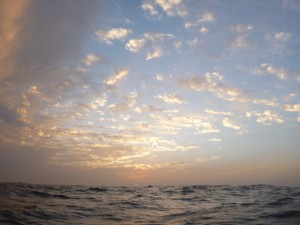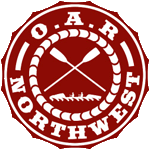
The first line in the first of the daily emails back from the boat (technically coming in on the 4th day – thank you seasickness and rough seas), directly from Adam: “I am starting to adjust to the sea and should be getting some information out there to the public.”
And with that, your first image from the sea!
Markus, Pat, Jordan and Adam continue to get their sea legs and have been taking lots of photos and video that will begin coming your way over the next few days. The wildlife continues to inspire and motivate the guys through difficult seas. Last night, in particular, proved quite enjoyable, as “the winds were quite low. [Which was opposite the weather models.] This stands out because the night was moonlit, warm and pleasant. In fact, we took advantage of the balmy moonlit night to take the first opportunity to have a naked row.”

Troubleshooting continues with some of the science gear. We didn’t have a chance to extensively test the marine/atmospheric automatic data collection systems, as the “brain” of the system wasn’t able to be completed until the last minute. All is finally coming in except pCO2 at the moment, and hopefully that will come back online.
The boat is also running fast enough right now at rest due to the wind/waves that getting sound vertical water column data has us scrambling for all the weighted metal objects we can find to sink it. That’s small potatoes at the moment though.
The data collection is so critical to what we’re doing, because ocean acidification, ocean currents, weather patterns, and so many other pieces of a forecaster’s and an environmental scientist’s depend on sound forecasting models that are essentially a ‘best educated guess’ from historic numbers and observations. If we can contribute with this hi-resolution data stream in any way possible, then a HUGE part of our education and conservation goals can be met.
Read more about the research arm of the expedition
